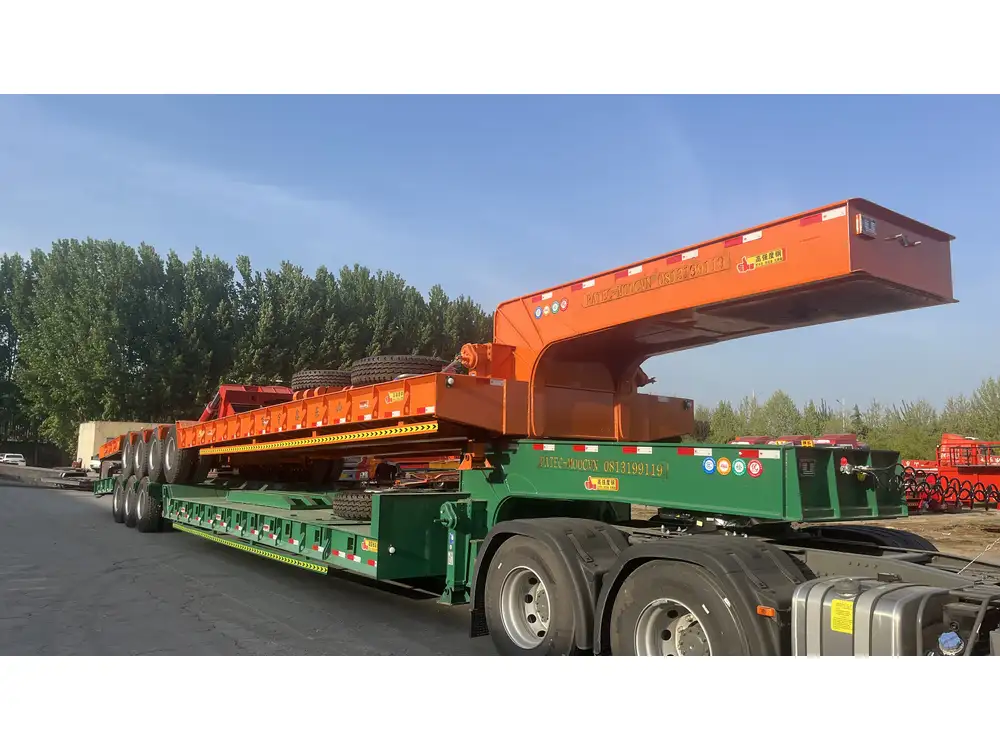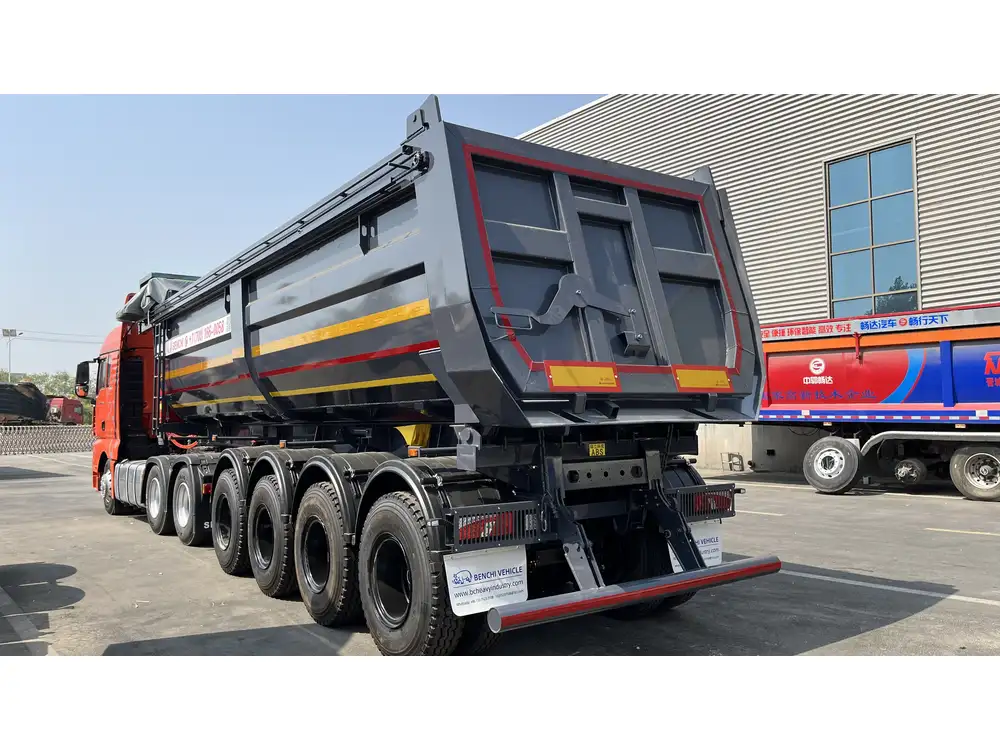Emptying a belly dump trailer is a critical process that requires precision and care to ensure safety and efficiency. This guide will explore various methodologies, best practices, and safety tips on how to empty a belly dump trailer successfully. Whether you are a seasoned professional or a novice in the industry, understanding these techniques will enhance your operation’s effectiveness.
Understanding Belly Dump Trailers
What is a Belly Dump Trailer?
A belly dump trailer is a specialized type of trailer designed for transporting loose materials, such as gravel, sand, and asphalt. It features a unique design, with a bottom-opening that allows for the rapid unloading of materials. The simplicity of operation combined with the efficiency of its unloading capabilities makes belly dump trailers an essential asset for construction and mining industries.

Key Components
| Component | Description |
|---|---|
| Hopper | The compartment where materials are stored. |
| Dump Door | The opening mechanism that releases materials. |
| Axles | Support the trailer and allow it to be towed. |
| Tandem Wheels | Provide improved stability and weight distribution. |
Familiarity with these components is essential for the safe and efficient operation of a belly dump trailer.
Preparing for Unloading
1. Ensuring Safety Protocols
Before attempting to empty a belly dump trailer, it is critical to follow established safety protocols. Here are the vital steps to take:
- Inspect the Trailer: Conduct a thorough inspection of the trailer, ensuring that all components are functioning correctly.
- Check for Warnings and Alerts: Ensure all safety alarms and lights are operational.
- Wear Protective Gear: Equip yourself with appropriate personal protective equipment (PPE), including safety goggles, gloves, and hard hats.

2. Site Inspection
Conduct a meticulous site inspection to determine:
- Surface Conditions: Ensure the ground is stable enough to handle the load being discharged.
- Obstacles: Look out for any overhead or ground-level obstacles that might interfere with the unloading process.
3. Positioning the Trailer
Proper positioning is crucial. Follow these steps:
- Align with Dump Area: Position the trailer so that the dump door aligns perfectly with the unloading area.
- Brake and Stabilize: Engage the trailer brakes and employ wheel chocks to prevent any unintended movement.
Techniques for Emptying a Belly Dump Trailer

1. Gravity Dumping Method
The gravity dumping method relies on the natural force of gravity to discharge the load. Steps include:
- Open the Dump Door: Activate the mechanism to open the dump door. Most belly dump trailers have pneumatic or hydraulic systems that make this process straightforward.
- Adjust the Trailer Angle: If necessary, adjust the towing vehicle to create a slight incline, which can help promote faster unloading by aiding the movement of materials.
- Release the Materials: Once the door is open, physical gravity will now start the process of transferring materials from the hopper to the desired location. In some cases, you might need to lightly rock the trailer to facilitate flow.
2. Using a Pull-Stop Mechanism
The pull-stop mechanism provides more control over the unloading process, particularly in delicate scenarios where precision is paramount. The steps include:
- Engage the Pull Stop Controls: Activate the control system to engage the pull-stop mechanism. This will regulate the flow of materials.
- Steady Release: Slowly pull the cord or cable to create a controlled release of the load, allowing you to manage how much and how quickly the materials are discharged.
3. Employing a Pneumatic System
Certain modern belly dump trailers come equipped with pneumatic systems designed to enhance the unloading speed. Here’s how to utilize this advanced system:
- Activate the Pneumatic Blower: Once the dump door is open, turn on the pneumatic blower. This equipment uses air pressure to evacuate the materials quickly and efficiently.
- Monitor Air Pressure: Keep a close watch on the air pressure gauge to ensure that it remains at optimal levels for effective material discharge.
- Adjust as Necessary: Fines or denser materials may require closer supervision and adjustments to the air pressure to prevent build-up in the chamber.

Best Practices for Efficient Unloading
1. Varying Techniques
Different materials may require unique approaches to unloading:
| Material | Recommended Method | Notes |
|---|---|---|
| Gravel | Gravity Dumping Method | Fast and efficient unloading. |
| Asphalt | Pull-Stop Mechanism | Requires careful management. |
| Sand | Pneumatic System | Use to expedite process. |
2. Constant Communication
Maintain clear and constant communication between operators and ground personnel during the unloading process:
- Use Two-Way Radios: Equip both parties with radios to relay any unexpected changes or necessary adjustments without creating confusion.
- Signal Flags: For scenarios with limited visibility or noise, employ signal flags for additional guidance and communication.

3. Regular Maintenance
Routine maintenance of both the trailer and the unloading equipment is non-negotiable. Key practices include:
- Daily Inspections: Conduct inspections before and after each use to identify potential issues.
- Annual Servicing: Schedule comprehensive yearly service checks to maintain optimal operational integrity.
Troubleshooting Common Issues
Even with the best practices in place, challenges may arise during the unloading process. Understanding how to troubleshoot these issues is paramount.
1. Material Jam

Symptoms:
- Inability to release material.
Solutions:
- Adjust Trailer Position: Recheck alignment with the unloading area.
- Use a Lever: Employ a lever to gently tap the jammed material.
- Inspect the Dump Door: Ensure there are no obstructions in the door mechanism.
2. Equipment Malfunction

Symptoms:
- Delays in dump door operation.
Solutions:
- Inspect Mechanism: Check hydraulic or pneumatic systems for malfunctions.
- Replace Faulty Parts: Replace any damaged or worn components immediately.
- Seek Professional Help: If issues persist, contact a qualified technician for assistance.
Conclusion
Successfully emptying a belly dump trailer involves a blend of strategic preparation, effective technique, and ongoing maintenance. By adhering to the best practices outlined above and leveraging the right unloading methods tailored for specific materials, operators can enhance their efficiency and safety during unloading operations.
Ultimately, mastering the art of emptying a belly dump trailer not only streamlines operations but also boosts overall productivity. Implementing these guidelines will contribute significantly to achieving optimal results while ensuring that safety and efficiency remain at the forefront of every unloading task.



